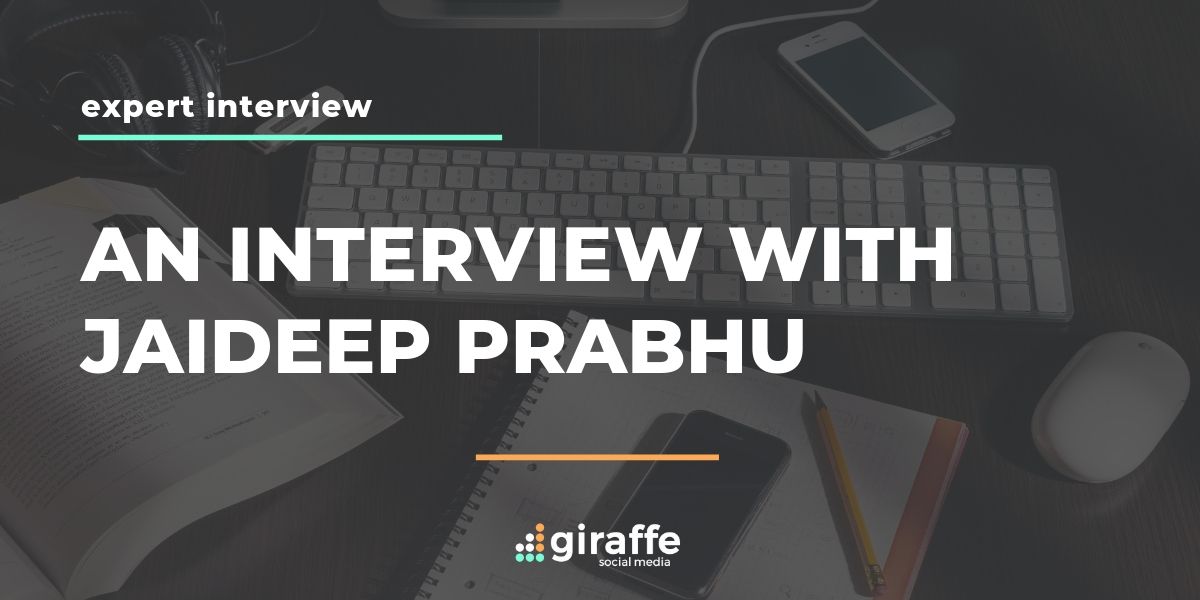 Jaideep Prabhu is the Jawaharlal Nehru Professor of Business and Enterprise at the Judge Business School at the University of Cambridge, England. The Professorship was established by the Government of India with an endowment of £3.2 million. Professor Prabhu is also the Director of the Centre for India & Global Business (CIGB), whose Executive Director was Navi Radjou. He is the co-author of Jugaad Innovation: Think Frugal, Be Flexible, Generate Breakthrough Growth, described by The Economist as “the most comprehensive book” on the subject of frugal innovation. Jaideep Prabhu is a member of the editorial boards of the Journal of Marketing, the Journal of the Academy of Marketing Science, the International Journal of Research in Marketing and the Journal of Management Studies, and a member of the senior advisory board of the European Journal of Marketing. Please enjoy our interview with Jaideep Prabhu.
Jaideep Prabhu is the Jawaharlal Nehru Professor of Business and Enterprise at the Judge Business School at the University of Cambridge, England. The Professorship was established by the Government of India with an endowment of £3.2 million. Professor Prabhu is also the Director of the Centre for India & Global Business (CIGB), whose Executive Director was Navi Radjou. He is the co-author of Jugaad Innovation: Think Frugal, Be Flexible, Generate Breakthrough Growth, described by The Economist as “the most comprehensive book” on the subject of frugal innovation. Jaideep Prabhu is a member of the editorial boards of the Journal of Marketing, the Journal of the Academy of Marketing Science, the International Journal of Research in Marketing and the Journal of Management Studies, and a member of the senior advisory board of the European Journal of Marketing. Please enjoy our interview with Jaideep Prabhu.
Talk us through a typical day for you…
I try to work on research and writing until noon. I then have lunch meetings with colleagues or students. And spend the afternoon on teaching or school/university administration. In the evenings, when I’m not playing with kids, I’m following up on work, including emails.
How did you get into marketing?
I was doing a Masters in Engineering at the University of Southern California when I heard about an Open Day in the Business School for prospective PhDs (with free lunch). At the meeting, I heard professors in various fields of business (finance, operations, strategy etc.) talk about their area and they all sounded great. Then I met a PhD student and when I asked him what area I should choose, he said marketing. So that’s what I did!
Where do you get your latest marketing news and tips from?
The Economist and my students.
What one piece of advice would you give a small business owner looking to market their business?
Always start and end with the customer. What does the customer want and how does the customer want it? Then find the best way to give the solution to them.
What’s the best book on marketing you’ve ever read? What lessons did you take away from it?
The classic Philip Kotler textbook on marketing management. It’s full of everything you need to know about how to develop, implement and evaluate marketing plans. The key lesson is the importance of knowing your target customers and then using your marketing tools (product, price, promotion and place) to meet their constantly changing needs and wants better than competitors.
You’re known for your work and research on ‘frugal innovation’, can you briefly describe what that is and why it’s important?
Frugal innovation is the creation of faster, better and cheaper solutions that employ minimal resources. The approach is important because it offers interesting possibilities for large and small firms in developing and developed world.
In the developing world, over 3 billion people live outside the formal economy and face significant unmet needs in core areas such as health, education, energy, food, and financial services. For years this large population was either the target of aid or came under the purview of national governments. But recently, however, private sectors firms, both large and small, have begun to develop market-based solutions to meet the unmet needs of these vast millions.
Meanwhile in the developed world, declining real incomes and government spending, accompanied by greater concerns about the environment, are making consumers both value and values conscious. But equally, small firms in the West are now empowered to do with limited resources what only large firms could do in the past. Ubiquitous tools such as smart phones, cloud computing, 3D printers, crowdfunding, and social media, have given rise to grassroots innovation and entrepreneurship exemplified by the maker movement and the sharing economy. This has the potential to address problems like climate change and inequality but also to generate creative, income generating employment.
Do you have a favourite marketing campaign of recent years? What was it and why does it stick in the memory?
My favourite example is more a model for marketing campaigns in general rather than a single campaign as such. It concerns an Indian market research company called ZipDial that offers a new way for advertisers to reach their customers using the phenomenon of a “missed call”. Brands display a phone number in their ads and urge people to dial it. When people call the number, it disconnects automatically after one ring and the caller is sent a text or voice message with offers or discounts. Since 2010, Zipdial has raked in a staggering 375,000 enquiries a day. It runs over 400-odd marketing campaigns at a time and its clients include Fortune 500 firms and start-ups.
What advice would you give a business owner who is stepping into the world of social media for the first time?
Start by taking a quick online course on digital marketing and social media.
In three words; describe the future of marketing.
Frugal, fast and fun!






